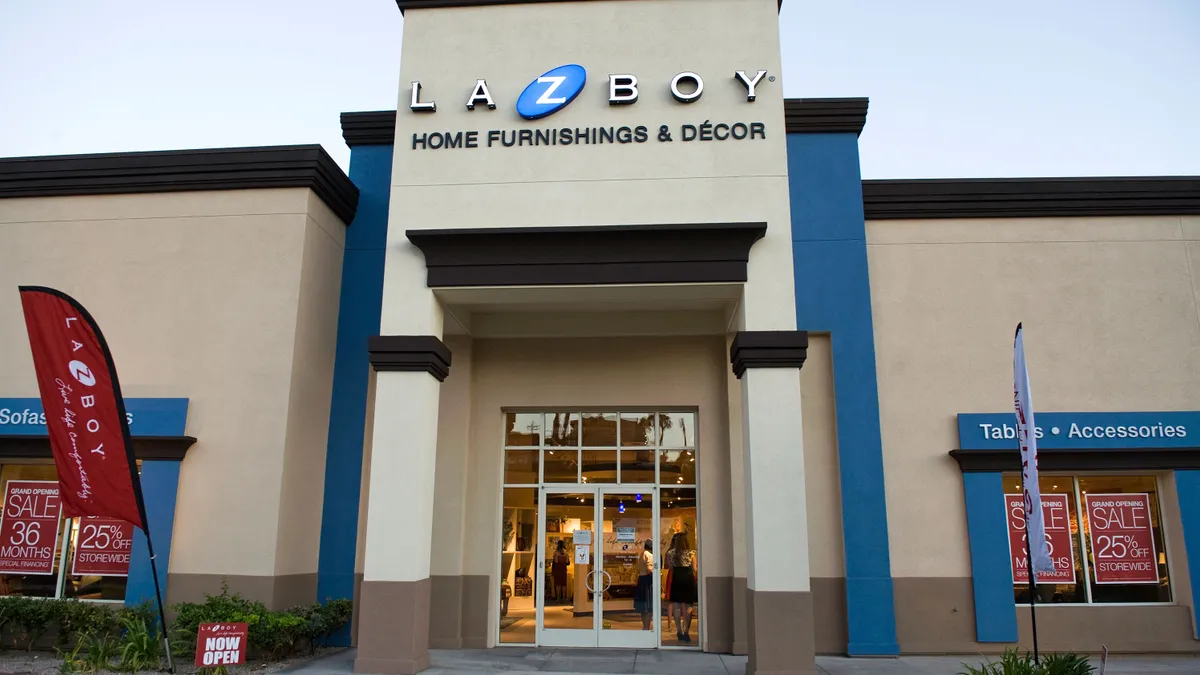Dive Brief:
- La-Z-Boy has made “structural changes” across its supply chain to shorten lead times and work through a large backlog of orders, President and CEO Melinda Whittington said on a Q4 earnings call.
- The furniture company has moved to expand North American operations with multiple new factories in Mexico, Whittington said. La-Z-Boy has also changed processes within its plants to maximize output and shifted procurement strategies to expand its global supplier base.
- La-Z-Boy has struggled with a large backlog of orders in part due to lengthened lead times. At one point, customized products that used to be delivered in four to six weeks took four to seven months, according to Whittington.
Dive Insight:
La-Z-Boy’s supply chain adjustments have already begun to paid off – Whittington said the company has been able to bring lead times for customized products down to 10 to 14 weeks.
Several months of COVID-19 lockdowns delayed orders and depleted inventories. As factories began to ramp up production, not only did La-Z-Boy have a large backlog of orders, but a steady stream of new ones.
The company is now investing heavily in its own production to reduce disruptions from suppliers. La-Z-Boy is also maintaining higher inventory levels, investing $72 million to protect against future supply shocks and support increased production. The company additionally invested $77 million in capital expenditure projects including plant upgrades at manufacturing distribution centers.
La-Z-Boy has opened at least two leased manufacturing plants in Mexico, according to its 10-Q. To further boost production, the company also added second shifts and weekend shifts to U.S. plants when necessary and reactivated a portion of its upholstery manufacturing facility in Newton, Mississippi.
The investments in North America are expected to lead to lower cost manufacturing footprint with “improved capabilities to service the West Coast,” Whittington said. The CEO said the business will be structured “to be successful in what will continue to be a volatile environment.”
“Although the macroeconomic environment is volatile and will remain choppy for the foreseeable future, our focus is on the long term, controlling what we can and driving agility through every facet of the organization,” said Whittington.














